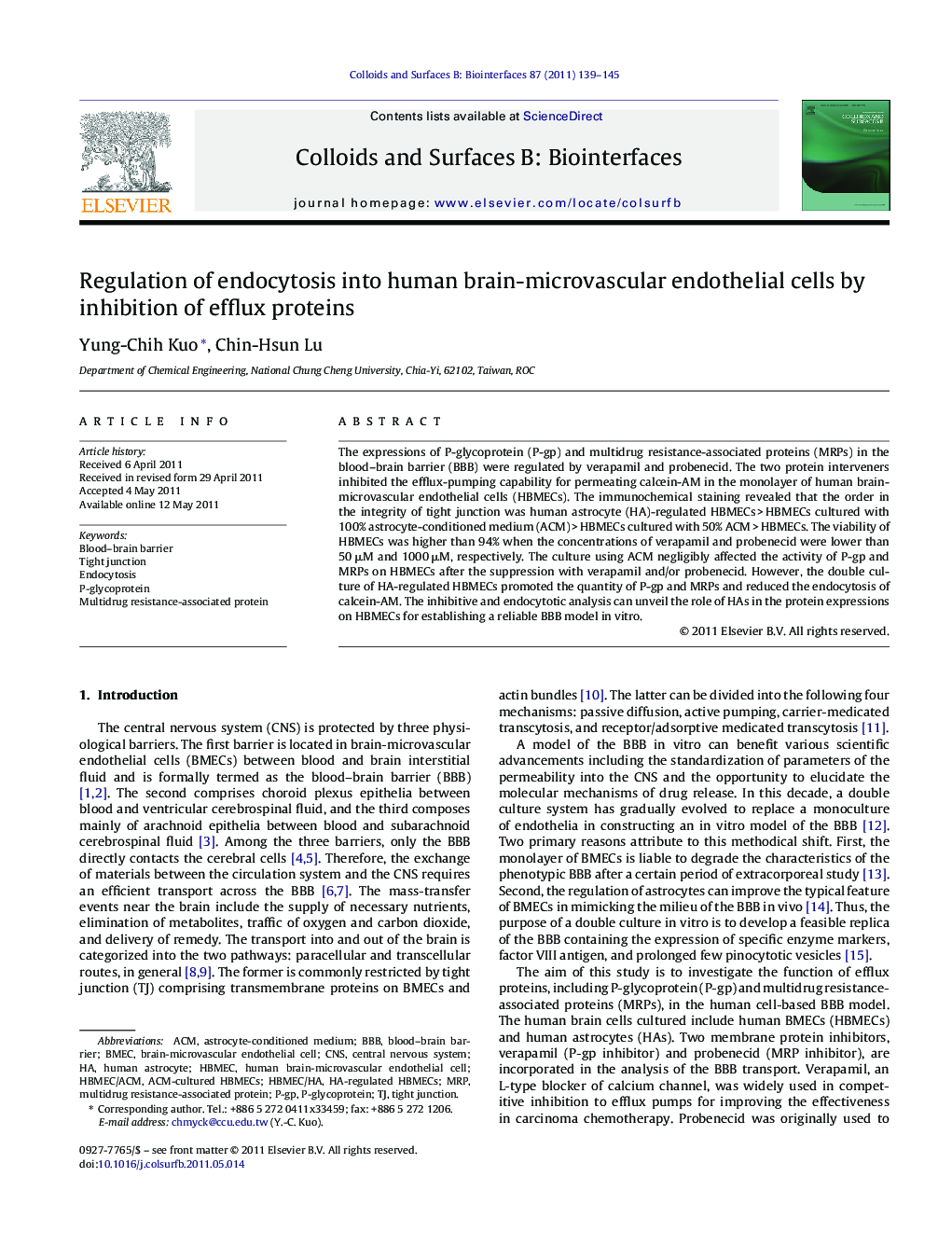| Article ID | Journal | Published Year | Pages | File Type |
|---|---|---|---|---|
| 601222 | Colloids and Surfaces B: Biointerfaces | 2011 | 7 Pages |
The expressions of P-glycoprotein (P-gp) and multidrug resistance-associated proteins (MRPs) in the blood–brain barrier (BBB) were regulated by verapamil and probenecid. The two protein interveners inhibited the efflux-pumping capability for permeating calcein-AM in the monolayer of human brain-microvascular endothelial cells (HBMECs). The immunochemical staining revealed that the order in the integrity of tight junction was human astrocyte (HA)-regulated HBMECs > HBMECs cultured with 100% astrocyte-conditioned medium (ACM) > HBMECs cultured with 50% ACM > HBMECs. The viability of HBMECs was higher than 94% when the concentrations of verapamil and probenecid were lower than 50 μM and 1000 μM, respectively. The culture using ACM negligibly affected the activity of P-gp and MRPs on HBMECs after the suppression with verapamil and/or probenecid. However, the double culture of HA-regulated HBMECs promoted the quantity of P-gp and MRPs and reduced the endocytosis of calcein-AM. The inhibitive and endocytotic analysis can unveil the role of HAs in the protein expressions on HBMECs for establishing a reliable BBB model in vitro.
Graphical abstract.Figure optionsDownload full-size imageDownload as PowerPoint slideHighlights► Human astrocyte-regulated HBMECs produce an integral tight junction in the blood–brain barrier. ► HBMECs express P-glycoprotein (P-gp) and multidrug resistance-associated proteins (MRPs). ► Astrocyte-conditioned medium yields little variation in the expression of P-gp and MRPs. ► Verapamil and probenecid inhibit P-gp and MRPs and increase endocytosis of calcein-AM.
